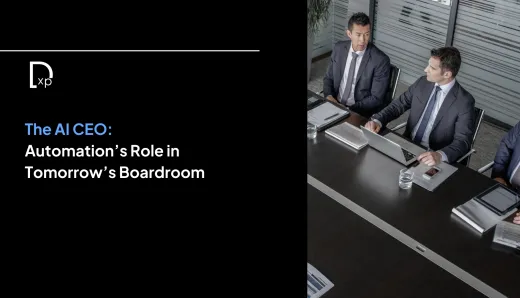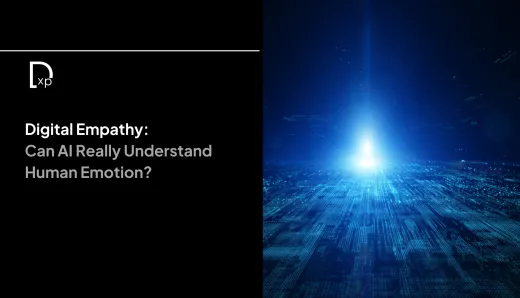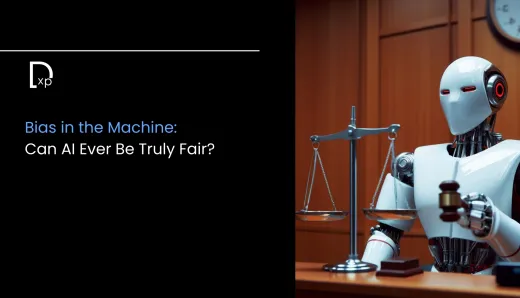From Insight to Action: How AI Is Redefining Decision-Making in Enterprises

The Shift from Data-Driven to AI-Driven
Remember when “data-driven” decision-making felt revolutionary?
Just a few years ago, companies were scrambling to collect data, analyze it, and use it to outpace competitors. Spreadsheets, dashboards, KPIs — these were the tools of the modern business strategist.
But something has changed.
Data isn’t the bottleneck anymore. We’re drowning in it. What’s missing now? The ability to move from insight to action at scale and speed.
Enter AI.
AI doesn’t just process information. It interprets it. Learns from it. And increasingly, it makes recommendations — and even decisions — that once required entire departments.
This isn’t about convenience. It’s about competitive edge. The enterprises that understand how to move with AI-driven precision are already leaving everyone else behind.
The Problem with “Too Much Data”
Let’s start here: having more data doesn’t always mean better decisions.
In fact, it often creates the opposite problem — analysis paralysis. When there’s too much noise, teams freeze. They delay. They overthink. They second-guess.
AI changes that dynamic.
By finding patterns in real time and surfacing actionable insights, AI shifts the focus from collecting data to activating it.
It’s not just about knowing that sales dropped in Q2 — it’s about identifying why, who was affected, and what to do next before a human team could even start their Monday meeting.
This is where traditional BI tools fall short. They show you what happened. AI tells you what to do about it.
Decisions Are the New Growth Lever
If you strip business down to its core, it’s all about decisions.
Big ones, like entering new markets. And thousands of micro ones — product tweaks, ad optimizations, logistics adjustments, hiring calls — made every single day.
Most enterprises focus on execution. But the real differentiator is decision velocity.
How fast can you make the right move?
This is where AI shines.
When AI is embedded in enterprise systems — CRM, ERP, customer service, supply chain — it can provide real-time recommendations and predictions, drastically reducing the lag between insight and action.
Imagine a system that doesn’t just tell you which marketing channel is underperforming — but auto-adjusts spend based on current trends. Or one that flags a likely supplier issue before a shipment is delayed.
That’s not theory. That’s happening right now.
AI-Powered Decisions Aren’t Just Faster — They’re Smarter
Let’s be honest: humans have limits.
We bring emotion, bias, fatigue, and incomplete context into every decision. And while that doesn’t make us obsolete — it does make us inconsistent.
AI, when trained correctly, can make decisions based on a complete dataset. No gut feeling. No ego. No political agenda.
In sales, that might mean identifying the 10 leads most likely to convert — based not on guesswork, but on behavioral modeling. In operations, it might mean forecasting demand with far more accuracy than traditional methods.
In the enterprise context, where a single bad decision can cost millions, smarter matters.
And smarter starts with better signals, better timing, and better recommendations — all of which AI delivers.
From Centralized to Embedded Intelligence
Here’s a subtle, but critical shift: AI isn’t just a department anymore.
It’s not something that sits in a lab or with a data science team buried five layers deep in the org chart.
It’s becoming embedded intelligence — living inside the tools employees already use.
When AI is integrated into CRMs like Salesforce, productivity suites like Microsoft 365, or finance tools like Oracle or SAP, it becomes part of the flow. Invisible, intuitive, immediate.
That means decisions aren’t slowed down by waiting on reports. They happen in the moment — with context, confidence, and clarity.
This is the true promise of AI in the enterprise: decision empowerment at every level.
Not just the C-suite. Not just IT. Everyone.
Trust is the Real Adoption Hurdle
Of course, there’s still friction.
Most enterprise leaders don’t struggle to access AI anymore — they struggle to trust it.
Can the system explain why it made a recommendation? Can we verify the data it used? Can we override a decision if the context changes?
These are real concerns — and they point to the need for explainable AI. That means designing systems that don’t just make smart choices, but make transparent ones.
Trust is what turns experimentation into adoption. And it’s the job of leadership to make sure AI doesn’t just live in pilots and proof-of-concepts — but actually gets used, evaluated, and iterated in the real world.
Because no one gets value from AI that sits on the shelf.
The Competitive Advantage You Can’t Ignore
Let’s make this practical.
If your competitors are using AI to:
- Respond to customer trends faster
- Predict risks before they become crises
- Personalize experiences at scale
- Optimize supply chain with real-time data
…then your team working from last month’s dashboard isn’t just slower. It’s outplayed.
AI isn't a nice-to-have anymore. It's a strategic imperative.
And the longer enterprises treat AI as an “initiative” instead of a core capability, the harder it will be to catch up.
This is the new playing field. Real-time. Automated. Predictive. And increasingly autonomous.
Final Thought: You Still Own the Outcomes
Here’s the twist.
AI can help you make decisions faster and smarter. But it doesn’t own the consequences.
You do.
You still need judgment. Ethics. Context. Vision.
AI is your advisor — not your replacement. Its job is to reduce noise and surface what matters. Your job is to define what “better” means for your company.
In a world that moves at machine-speed, the most valuable asset is still a human leader who knows how to decide well — and quickly.
That’s where the leverage lives.




